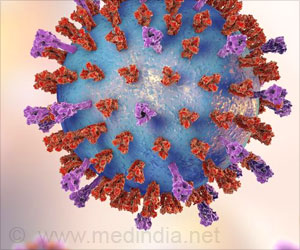- After COVID-19 and monkeypox, Tomato Flu is trending in India since its first case reported
- This common contagious disease generally targets children between one and five years of age
- It is called ‘Tomato' because of the red and painful blisters that gradually to the size of a tomato
Tomato flu outbreak in India
Go to source).
Researchers believe that it is a different clinical presentation of hand-foot-and-mouth disease (HFMD) caused by a group of enteroviruses (viruses transmitted through the intestine).
What is Tomato Flu?
Tomato flu or tomato fever is characterized by fever, joint pain, and red, tomato-like rashes usually seen in children below the age of five years. This is accompanied by other symptoms of viral fevers such as diarrhea, dehydration, nausea and vomiting, and fatigue.This was thought to be an aftereffect of dengue and chikungunya that is commonly seen in Kerala. However, researchers now believe that it is HFMD caused by enteroviruses like Coxsackievirus A-6 and A-16.
Tomato flu could be an after-effect of chikungunya or dengue fever in children rather than a viral infection. It could also be a new variant of the viral hand, foot, and mouth disease, a common infectious disease targeting mostly children aged 1–5 years and immunocompromised adults.
Why is Tomato Flu Infection Spreading Now?
Perhaps there is more attention on the infection because more cases are being reported this year — this could either be because there are more cases or because we are more vigilant about viral infections and testing after COVID-19.Since the disease is self-limiting, doctors do not usually test for it. While such surveillance is an important tool to keep an eye out for viruses in circulation in the community, it is not needed for individuals. Another explanation for the infection picking up now is the re-opening of schools.
How Is the Clinical Presentation Different?
The current cases are mainly caused by Coxsackievirus A-6 and A-16. Another pathogen — Enterovirus71 that also causes the disease is not very prevalent now. This is good because the pathogen was known to lead to severe neurologic symptoms, including fatal encephalitis (brain inflammation).The disease this time around has some atypical presentation as well. The red “tomato” rashes were traditionally restricted to the mouth (tongue, gums, and inside of the cheek), palms, and soles. However, now doctors are also reporting rashes on the buttocks, and a shedding of nails (2✔ ✔Trusted Source
Tomato fever and COVID 19, a double hit in the Indian health system
Go to source).
Is There a Treatment For Tomato Flu?
There is no specific treatment or vaccine available for the disease. Those with the infection are treated symptomatically. As it happens mainly in children, the Centre’s advisory to states focuses on prevention in these age groups.As per the advisory, anyone suspected to have the infection should remain in isolation for five to seven days after the onset of the symptoms.
It states that children must be educated about the infection and asked not to hug or touch other children with fever or rashes. The children should be encouraged to maintain hygiene, stop thumb or finger sucking, and use a handkerchief for a running nose.
Their utensils, clothing, and bedding must be regularly sanitized, they must be kept hydrated, and the blisters must be cleaned using warm water.
References
- Tomato flu outbreak in India - (https://www.thelancet.com/journals/lanres/article/PIIS2213-2600(22)00300-9/fulltext)
- Tomato fever and COVID 19, a double hit in the Indian health system - (https://www.ncbi.nlm.nih.gov/pmc/articles/PMC9274800/)
Source-Medindia













